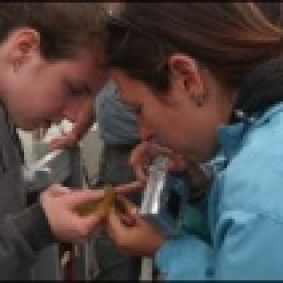Eight students will be presenting the summer work at the Ocean Sciences Meeting in March 2022!
Catherine Wade, University of Maryland, College Park
Class Year:
2005Mentor:
Roberta Marinelli, Ph.D.Project Title:
Effects of Elevated Ammonium Levels in Sedimentary Habitats on Productivity, Recruitment, and Growth in the Field
Abstract:
Marine sedimentary environments are biogeochemically active and face regular disturbance events. The topmost centimeters of the sediment are characterized by steep chemical gradients, and by disrupting the sediment surface, disturbance can create chemical patchiness on local scales. This has important implications for primary productivity, as well as recruitment and growth of benthic larvae and juveniles. The results of many laboratory studies focusing on the effects of increased concentrations of sedimentary ammonium on habitat selection and productivity are significant to the understanding of the processes by which larval and juvenile infauna colonize new environments. This experiment examined the effects of manipulated ammonium levels on primary productivity in the field. While ammonium levels were successfully spiked, chlorophyll A concentrations were not stimulated by the experimental manipulation. This is likely due to the fact that the environment in which the study was conducted did not seem to be nitrogen limited, and in fact, inhibition may have occurred in the face of excess nitrogen. Future studies involving altered surface chemistry are very important to understanding the biogeochemical processes that influence recruitment, growth, and primary productivity.




